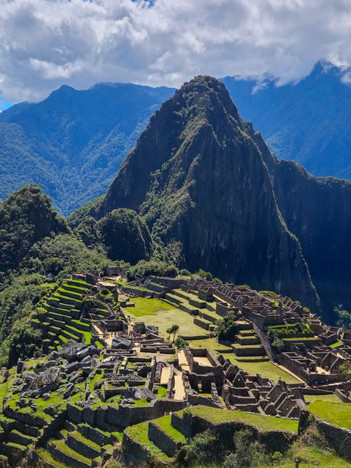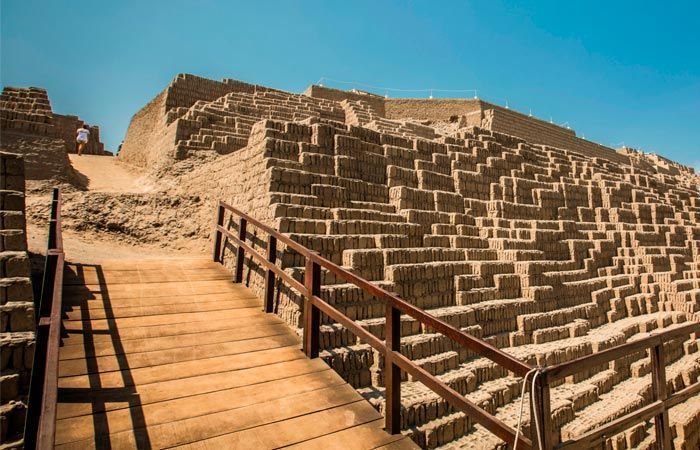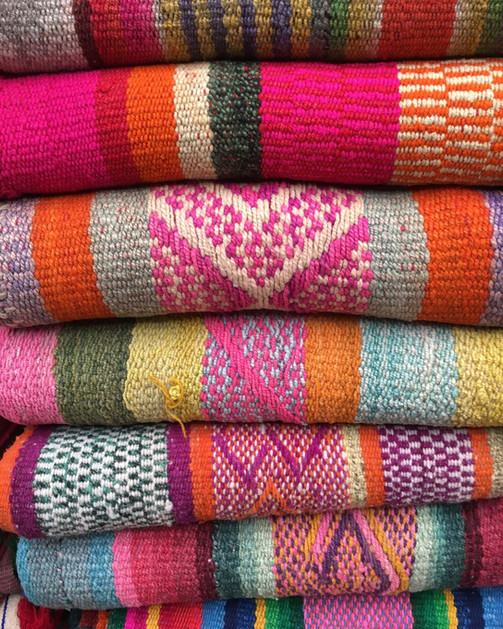Peru Travel Dairy : Design and Lifestyle Takeaways from Our Exhilarating Trip
- Mary Ann Skaria
- Sep 4
- 7 min read
Updated: Sep 6

Peru has a way of staying with you long after you’ve returned home. From the Sacred Valley to Cusco and Lima, we found ourselves surrounded by breathtaking landscapes, layers of history, and a culture that honors both tradition and daily life with care and artistry.
As a traveler, I was struck by the generosity of the people and their love for heritage—old traditions and languages being kept alive despite centuries of outside influence. As a designer, I found endless inspiration in the weaving, carving, gilding, and building techniques that are as much storytelling as they are craft.
This post is part travel journal, part design reflection, and part cultural immersion—a look at what makes Peru unforgettable, and the lessons we can bring back into our homes and lives
1. Sacred Valley and the Ruins of Pisac & Ollantaytambo
Our journey began with a long but exciting travel day: a 6-hour flight to Panama City, followed by a 3-hour flight to Cusco, and finally a 2-hour drive into the Sacred Valley. We had been really worried about altitude sickness, so we started prescription meds about 12 hours before landing. Thankfully, that helped us adjust more easily when we arrived in Cusco.
Our first destination was the beautiful Aranwa Resort, nestled in the breathtaking Andes. The mountains surrounding us, crisp fresh air, and a slower, more grounded pace of life.
We spent the next few days exploring the region with day trips to see the ancient ruins of Pisac and Ollantaytambo. Pisac especially left a mark—the charming village, the vibrant market stalls, and of course, the adorable baby alpacas and goats decked out in colorful headpieces. Locals care deeply for their animals, and even the many stray dogs we saw on the streets were clearly well loved and well cared for.
The Pisac ruins were incredible, and we decided to do the 2-hour hike down from the site to the town square. The views were stunning, but I’ll be honest—it was tough on my knees! If you're planning on doing the Machu Picchu hike afterward (like we were), I wouldn’t recommend this descent. Save your energy and joints!
2. Machu Picchu – A Journey Through Time
Day 4 was the long-awaited start of our two-day adventure to Machu Picchu. Unfortunately, my son—who has a history of asthma—came down with altitude sickness the day before, so I stayed back with him while the rest of the family went on the hike.
The Short Inca Trail is a two-day trek that offers highlights from the full 4-day experience. It winds through dense cloud forests and past stunning Inca ruins, ending with a dramatic entrance through the Sun Gate (Intipunku) in the late afternoon.
We all left the hotel early that morning for a drive to Ollantaytambo station. My husband and daughter started their hike at the trailhead, guided by a local expert and fueled by fresh picnic meals. The trail was physically challenging but unforgettable.
Meanwhile, my son and I stayed on the train to Aguas Calientes, riding alongside the Urubamba River and watching the landscape shift from dry mountain terrain to lush, humid forest. We checked into our hotel and reunited with the others that evening.
The next day, we took the bus up to Machu Picchu together. Our guide brought the Incan history to life as we hiked through the site, marveling at its scale and detail.
After lunch back in Aguas Calientes, we took the Vistadome train back to Ollantaytambo, where panoramic windows turned the journey into a moving postcard. From there, it was a drive back to Cusco for our final night in the Sacred Valley.
3. Cusco – Living History and Colonial Beauty
Back in Cusco, we stayed at the exquisite Palacio del Inka Hotel, a historic property with roots tracing back to the Qorikancha (Temple of the Sun) and later the residence of Gonzalo Pizarro. Over centuries, it evolved into a colonial mansion and now blends five centuries of history into a luxurious stay.
Cusco became my favorite city in Peru. The cobblestone streets, balconied architecture, and mountain views create a unique charm that’s hard to describe. Every street corner told a story.
On Day 3, we’d arrived in the middle of the Feast of Corpus Christi—a vibrant and chaotic celebration with schoolchildren performing traditional dances in the main square. Colorful costumes, festive music, and food stalls filled the streets. It wasn’t the quiet day we expected, but it was rich in cultural immersion.
We also toured the main cathedral, where our guide walked us through the complicated history of the Spanish Inquisition and colonial conquest. The fusion of Incan and Spanish architectural styles made the building itself feel like a historical document.
Before leaving, we had a professional photo shoot with Flytographer, capturing our family moments against the stunning backdrop of Cusco.
Lima – Coastal Charm & Culinary Delights
We ended our journey with a short flight to Lima, checking into our hotel in the modern Miraflores district. Our rooms overlooked the Pacific Ocean, and the fresh, salty breeze was a refreshing contrast to the highland air.
Highlights of our time in Lima included:
Visiting the Pre Inca ruins of Huaca Pucllana and having lunch at the Pucllana restaurant - with direct views of the ruins.
A walking tour of Barranco, the city’s bohemian quarter, filled with colorful murals, art galleries, and colonial architecture.
Shopping at the Indian and Inca Markets, where we picked up beautiful handmade souvenirs.
And of course, dinner at Astrid y Gastón, one of Lima’s most celebrated restaurants. We made the reservation a month in advance, and it did not disappoint—modern Peruvian cuisine at its finest, artfully plated and bursting with flavor.
5. Shopping & Cultural Finds
One of my favorite parts of traveling is discovering the unique crafts and artisanal traditions of a place—and Peru did not disappoint. From highland villages to bustling city markets, the entire country felt like a living museum of artistry and craftsmanship.
Alpaca wool, especially baby alpaca, is one of Peru’s most treasured materials—renowned for its softness, warmth, and cultural significance. Once reserved exclusively for Inca royalty, it continues to be a symbol of Peru’s rich textile heritage. If you’re looking for the best place to buy authentic alpaca wool sweaters, head to Chinchero in the Cusco region—famous for its traditional weaving and high-quality wool goods.
Beyond wool, there were so many other treasures to be found:
Handmade silver jewelry, often inspired by pre-Columbian or Andean motifs—elegant, timeless, and very wearable.
Sweaters, scarves, and other winter wear, crafted with extraordinary care.
Hand-painted tableaus depicting everyday Peruvian life, often framed in carved wood and filled with tiny, detailed papier-mâché figurines—whimsical, colorful, and utterly unique.
And of course, handcrafted wool hats, especially the soft ones made from baby alpaca, which became a practical and stylish souvenir for the cooler parts of our trip.
In Lima, shopping took on a more eclectic twist. The Indian and Inca Markets were overflowing with handicrafts, textiles, and ceramics, but one of my favorite stops was an antique shop in Miraflores. Peru is an incredible place to find religious art and figurines, and I was thrilled to come across a small antique Santos—a carved religious figure that now sits proudly on a shelf back home. I also had my eye on a stunning religious painting in a gilded cedar wood frame, but at $1,000, it was sadly out of budget. Still, just admiring it felt like a special part of the journey.
Whether it was an alpaca scarf, a silver pendant, or a tiny figurine from a market stall, everything we brought back from Peru holds a story.
What stayed with me most from our time in Peru wasn’t just the beauty of Machu Picchu or the artistry of the markets—but the people. Everywhere we went, we were met with warmth, generosity, and a deep, unwavering pride in their culture and heritage. From the villages of the Sacred Valley to the lively streets of Cusco, the spirit of the Andes runs strong.
There’s a quiet but powerful movement happening—a reclaiming of language, tradition, and identity that the conquistadors once tried to erase. Young artists, weavers, and guides are bringing back ancient crafts, speaking Quechua with pride, and keeping centuries-old stories alive.
And then there’s the special connection Peruvians share with their animals—livestock treated with care, baby alpacas dressed in colorful headpieces, and stray dogs who seem to belong to the whole community. They roam freely, often wearing hand-knit sweaters, and are clearly well-fed, loved, and part of the social fabric.
Peru is a country that lives between worlds—ancient and modern, highland and jungle, spiritual and grounded. And it left a deep imprint on us.
Happy Travels!
My Travel Recommendations for Your Next Trip to Peru
Sacred Valley
Do:
Quad biking adventure through the valleys of the Andes—breathtaking views of snow-capped peaks, fields of quinoa, and shepherds herding flocks along rugged, bumpy trails.
Stop at the Inca Greenhouse of Moray, with its ancient, circular terraced farming system designed to take advantage of microclimates.
Explore the Maras Salt Mines, where salt is still harvested by hand from thousands of terraced ponds.
Day trips to the ruins of Pisac and Ollantaytambo
Shop: Traditional woven alpaca wool goods in Chinchero
Stroll: Local markets in Pisac—don’t miss the baby alpacas in festive headpieces!
Tip: Give yourself a few days to adjust to the altitude—slow travel is smart travel
Cusco
Stay: Palacio del Inka, a Luxury Collection Hotel
Do: Guided tour of the main cathedral and learn about the layers of Incan and colonial history
Watch: Traditional dances during the vibrant Corpus Christi festival if you're lucky with timing
Wander: The cobblestone streets, ancient walls, and city squares—Cusco is full of architectural beauty and history
Photo Op: Book a professional shoot with Flytographer for stunning family portraits ( We loved our session with Livushe )
3. Machu Picchu
Trek: The Short Inca Trail (2-day hike), ending with a magical entrance through the Sun Gate with Alpaca Expeditions ( Highly recommend this tour group)
Stay (Aguas Calientes): Tierra Viva Machu Picchu
Ride: Vistadome train for a scenic journey through cloud forest and river valleys
Explore: Wander the ruins of Machu Picchu with a knowledgeable guide—early morning for the best light and fewer crowds
Lima
Stay: Hotel in the Miraflores district with stunning views of the Pacific
Do: Walking tour of Barranco, the city’s most colorful and bohemian neighborhood
Dine: Don’t miss Astrid y Gastón (reservations required!)—a culinary highlight of the trip
5. Shop
Indian and Inca Markets (in Lima) for artisanal gifts and textiles
Browse antique shops in Miraflores for religious art and collectibles—my favorite find was a small carved Santos figure
Handmade silver jewelry
Baby alpaca sweaters
Alpaca Hats
Hand-painted tableaus and papier-mâché figurines
Gilded wood religious art
Peruvian chocolate—favorites included passion fruit and mango-infused dark chocolate
Fine salt from Maras, especially the smoked pink salt










































































































